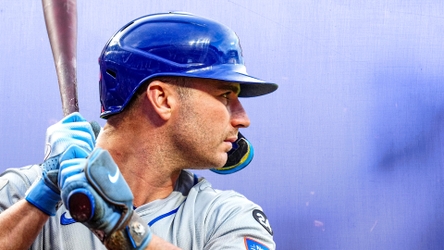On Jan. 16, I was one of several reporters who heard and relayed that the Mets expected Pete Alonso to sign elsewhere.
According to league sources, the organization reached that conclusion because Alonso turned down their offer of a three-year contract that contained opt-outs and included deferred money that would have elevated the total to well over $70 million. If he said no to that, the Mets thought, he must have a better deal elsewhere.
But now it is February, and Alonso is still a free agent. The Mets’ most recent signings left some room in their expanding budget for another addition. Clearly, the team’s pivot was not a slammed door — or, as owner Steve Cohen said on Jan. 25, they will “never say no.”
Considering all that, why not forget the events of the past month and reunite? With spring training set to start next week, perhaps it is time for Alonso to come home to the Mets for at least one more season, if not two or three.
Of all things, it was the Ryne Stanek signing that first signaled to me that this path remained somewhat open.
A review of the recent Mets/Alonso timeline of events should explain why:
— Talking to league sources in the days before Christmas, I got the sense that an Alonso/Mets reunion was highly likely, even inevitable, but only at the Mets’ price. The seven-year, $158 million offer that Alonso turned down in 2023 was long gone; the organization calculated his value closer to three years and $25-ish million. They arrived at this figure by watching the market for other first basemen and bat-first corner sluggers.
— Early in January, Alonso’s camp approached the Mets with a three-year concept, but at a salary that the team considered too far above market value (the exact number is not known).
— On Jan. 16, after Alonso turned down the Mets’ aforementioned three-year offer, the team immediately pivoted, committing significant salary to outfielder Jesse Winker and reliever A.J. Minter. I can tell you that the Mets were wholly and sincerely prepared to move forward without Alonso — a player and person who they wanted, but not at his current price.
— On Jan. 23, I reported that talks between Alonso and the Toronto Blue Jays were advancing. They weren’t at the one-yard line, but as one source with direct knowledge put it, they were at the 10. As Josh Allen’s tush knows, those final yards are hardly a guarantee.
Newsday’s Tim Healey bested me that day, reporting that Alonso was “deep in contract talks with the Blue Jays.”
Obviously, the sides could not complete that deal. That left Alonso without a publicly known suitor.
— On Jan. 25, at the Amazin’ Day fanfest, Cohen explained the Mets’ pivot. “The reality is we’re moving forward, and we continue to bring in players,” the owner said. “As we continue to bring in players, the reality is it becomes harder to fit Pete into what is a very expensive group of players that we already have. And that’s where we are.”
Cohen was telling the truth: The Mets were pushing the payroll past where they wanted it, and would now have to stretch past their point of discomfort, into the $340 millions range, to add another $20-plus million player like Alonso.
— Within a few days of the fan fest, Cohen and Alonso’s agent, Scott Boras, spoke briefly about Alonso, but president of baseball operations David Stearns remained in charge of talks, as he does to this day.
— At that point, the Mets were in conversations with two tiers of relievers: One group that cost approximately $10 million (think Kenley Jansen) and one that cost half that.
— When the Mets reached a deal with Stanek on Jan. 30 for $4.5 million, it signaled to me that they were leaving room for the possibility of a pivot back to Alonso.
— That same thought occurred when the team likely filled its utility infielder vacancy by signing Nick Madrigal to a split contract that maxes out at $1.35 million. That is significantly less than a reunion with Jose Iglesias would have cost.
That brings us to today. While it might seem incongruous for wealthy teams to remain mindful of money, that’s what they all do. MLB owners did not become successful in business by operating without budget goals.
Stearns and Cohen would love to get the Mets under the so-called “Cohen tax” threshold one of these years, and stop paying a 110% penalty on every dollar. Adding Alonso will make that more difficult, especially if he signs up for an opt-out after this season, and then declines to exercise it.
But Stearns and his baseball operations department have always preferred to have Alonso on their 2025 roster. If Alonso does not return, the team believes that it can win with an internal infield rotation that involves Mark Vientos seeing significant time at first base. But they were never off Alonso, the baseball player.
Yes, they made a financial pivot starting on Jan. 16. And yes, these negotiations have been “exhausting,” as Cohen put it.
But it’s hard to see anything that would prevent a warm reunion. If the Mets are willing to stretch their budget (their call), and Alonso is willing to return for much less than what he turned down in 2023 (his call, but the above timeline suggests that he is), why not do it?
It would certainly be a happy ending to the most exciting offseason — remember Juan Soto? — in franchise history.
Read the full article here

